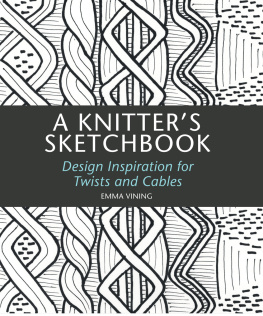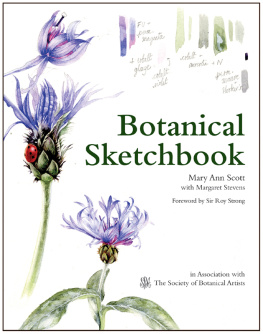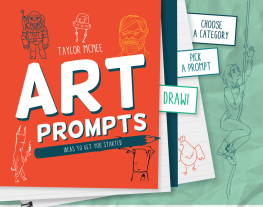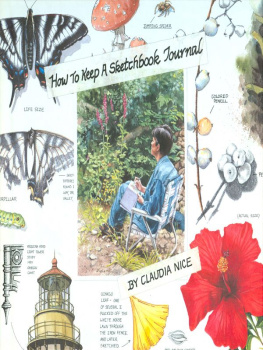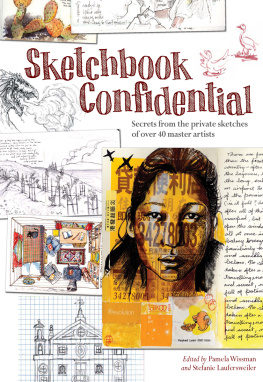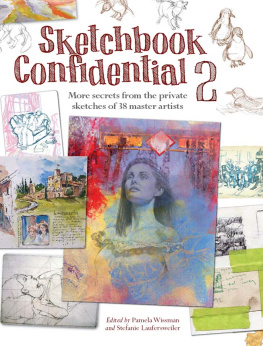THE 30-DAY
SKETCHBOOK
PROJECT
MINNIE SMALL
Daily Exercises and Prompts to
Fill Pages, Improve Your Art and
Explore Your Creativity

The author and publisher have provided this e-book to you for your personal use only. You may not make this e-book publicly available in any way. Copyright infringement is against the law. If you believe the copy of this e-book you are reading infringes on the authors copyright, please notify the publisher at: http://us.macmillanusa.com/piracy.
This book is dedicated to anyone with the courage and creativity to conquer the blank page.
A sketchbook is arguably the most valuable tool in any artists arsenal, and is easily the most versatile.
A home for your ideas, a place to learn and experiment and a springboard for personal expression, your sketchbook can be anything you want it to be. It can be somewhere to journal, capture memories and stick in scraps, somewhere to practice drawing skills with rough sketches and studies, somewhere for research and notes or a curated collection of beautiful finished pieces in one place. It can even be all of these things at once.
You might have several different sketchbooks on the go at any given time, or maybe your version of a sketchbook is a stack of loose papers gathered together in a particular drawer, folder or envelope. Regardless of what it looks like, or what you use it for, the one and only thing that all sketchbooks have in common is that they cant be done wrong.
In fact, getting good at making mistakes is a fundamental part of improving and enjoying your art. When you gift yourself the space to experiment and make a mess, you can begin to find solutions to whatever creative hurdles you come across and take bold steps toward becoming the artist you want to be. Your sketchbook is the perfect place to do that.
In this book, you will learn to feel at home in your sketchbook. You will get comfortable with the habit of creating freely, loosening up and building confidence in your work. And before long, you will learn to tap into your own inherent creativity to start coming up with consistent, unique ideas, from which youll be able to start pushing your own boundaries and creating things you never thought yourself capable of.
My hope is that through these exercises and prompts, youll gradually be able to develop a love for your sketchbook and a sense of comfort and endless possibility within its pages. By the end of this book, you should see not just an improvement in your art, but more importantly, a new outlook on the way you create and a new lifelong habit of artistry.
How to Use This Book
I have laid things out in a way that will work well with daily practice that progresses in difficulty week-by-week, though please feel free to take as much time with these exercises as you need. If it takes you multiple days to complete one exercise or you feel youd like to linger on one specific topic for a whilego for it!
We start out with some simpler and quicker exercises that are designed to help ease you into the routine of finding time to make art every day.
TIP FOR FINDING TIME FOR ART!
If making time for this project every day is not possible, find a pace that works for you. The most important thing here is commitment and consistency.
It may help you to make a plan and to schedule in your sessions with this book and your sketchbook. You could use a habit tracker, such as a wall calendar, that you cross off for each day you complete an exercise to keep yourself accountable and create a visual achievement board to spur you on. If you find that you work more spontaneously, make sure you have your sketchbook with you at all times, so that you can tackle each days exercise whenever you have a spare moment.
And if all you can manage is fifteen minutes while you wait for your morning train or ten minutes before you switch off for bed, then simply commit to that and work your way through the book a little at a time.
Each daily exercise is split into two sections. In the first, I will walk you through the concept of the days practice, why it is important and how you can use it to enhance your future work. Then, I will guide you through a practice exercise that you can work on in your sketchbook to help you get accustomed to the new idea or technique. In the second section, I will give you a prompt that will allow you more space to develop what youve learned and transfer those skills into your own unique sketchbook page. Ill also share my sketchbook page inspired by each days prompt if youre looking for an extra spark.
Feel free to simply work on the exercise portion rather than the prompt, or vice versa. You may even like to try two run-throughs of the book, one month where you get accustomed to each practice exercise, one by one, and the next time going through and exploring the prompts with your own ideas and the new skills youve developed.
What Youll Need
Dont rush out and stock up on supplies! If you have pencils, pens, paint and brushes, many of these exercises can be adapted to suit the tools you already have. We want to push ourselves to try new things and explore mediums we might not ordinarily use or find ways that we wouldnt usually use the ones we have, so get creative with how you make the exercises work for youand, if youre feeling daring, try that medium youve always wanted to try but never knew where to start!
In this book, I use:
- Graphite and Colored Pencils
- Watercolor, Gouache and Acrylic Paints
- Scrapbooking and Basic Stationery Supplies
- Fineliner and Ballpoint Pens
If you are going to grab a new set of paints, pens or pencils, you dont need to own every single color that exists. If anything, I find that too many choices can be overwhelming and lead to muddy color mixes. Going back to basics and simply sticking with a standard mixing color set of Blue or Cyan, Red or Magenta and Yellow, with the addition of Black and White, will work just fine.
Finally, of course, you will need a sketchbook. In this book, I use a Stillman & Birn Alpha Series Sketchbook and a couple of beautiful handmade sketchbooks: one from Sketchbook Co. and one from pebblepeoplepaper on Etsy. All that matters with the sketchbook you choose is that the paper can withstand wet media and isnt so thin that your work will show throughthink 110lb (200gsm) or up.
You might prefer a ring-bound or casebound sketchbook, something pocket-sized or the size of your desk, landscape or portrait, hard or soft cover. As long as its something youre comfortable working in and a book you wont be too precious with, it is the perfect place for our journey to start.

Spend a couple of days getting into a new sketchbook routine and take the first steps toward meeting the blank page
The first steps in any creative journey are always the most intimidating, so over the next two days, well ease into our new sketchbooking habit with a couple of easily approachable exercises designed to help you release the fear of failure and embolden you to take on this challenge.



